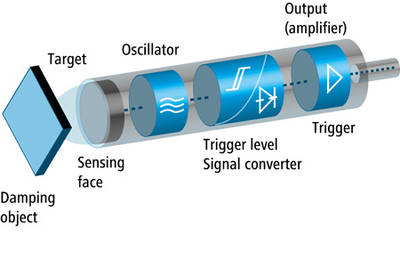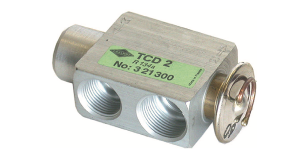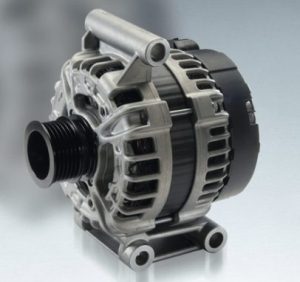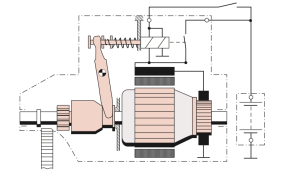Inductive sensors are a type of non-contact sensing device that can detect the presence, position, or motion of metal objects. They are widely used in industrial and manufacturing applications where high accuracy and reliability are essential.
In this blog post, we will explore the working principle, types, and applications of inductive sensors.
Working Principle: Inductive sensors work on the principle of electromagnetic induction. They consist of an oscillator circuit, a coil, and a metal target. When the metal target approaches the coil, it induces eddy currents in the metal, which in turn generates a magnetic field that interacts with the coil. This interaction causes a change in the oscillation frequency of the oscillator circuit, which is detected by the sensor’s electronics. The change in frequency is proportional to the distance between the sensor and the metal target, and this distance can be used to determine the position, presence, or motion of the target.
Types of Inductive Sensors: There are two main types of inductive sensors:
- High-frequency inductive sensors: These sensors operate at high frequencies (ranging from tens of kHz to several MHz) and are used for detecting small metal objects or for high-precision position sensing applications.
- Low-frequency inductive sensors: These sensors operate at low frequencies (typically a few kHz) and are used for detecting large metal objects or for detecting the presence of metal in harsh environments (such as those with high levels of dirt, dust, or moisture).
Applications: Inductive sensors have a wide range of applications in various industries, including automotive, aerospace, robotics, and manufacturing. Some common applications of inductive sensors are:
- Position sensing: Inductive sensors are used to determine the position of components on machines or conveyors. They can also be used for measuring the thickness of metal sheets.
- Object detection: Inductive sensors are used to detect the presence of metal objects in various applications, such as detecting the presence of metal parts in an assembly line.
- Motion sensing: Inductive sensors can be used to detect the speed and direction of moving metal objects, such as gears or rotating shafts.
- Level sensing: Inductive sensors can be used to detect the level of liquid metals in furnaces or tanks.
Conclusion: Inductive sensors are an essential tool in many industrial and manufacturing applications. They work on the principle of electromagnetic induction and are used for position sensing, object detection, motion sensing, and level sensing. High-frequency inductive sensors are used for high-precision position sensing applications, while low-frequency inductive sensors are used for detecting large metal objects or in harsh environments. With their high accuracy and reliability, inductive sensors play a crucial role in ensuring the safety and efficiency of many industrial processes.
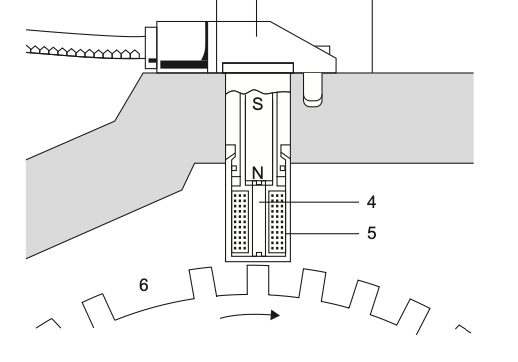
Inductive sensors are commonly used in industrial and manufacturing settings because of their ability to detect metallic objects without physical contact. This feature makes them ideal for harsh environments where other types of sensors may fail due to wear and tear or contamination.
Inductive sensors are available in a variety of sizes, shapes, and sensing ranges to suit different applications. Some sensors have a cylindrical shape and can detect metal objects within a few millimeters of the sensor’s face, while others have a flat or rectangular shape and can detect metal objects at greater distances.
In addition to their ability to detect the presence of metal, some inductive sensors are designed to detect specific metal types. For example, some sensors can differentiate between ferrous and non-ferrous metals, which is useful in sorting or identifying metal parts.
Another important consideration when selecting an inductive sensor is its operating frequency. High-frequency sensors are typically used for high-precision position sensing applications, while low-frequency sensors are used for detecting large metal objects or in harsh environments.
Inductive sensors are also available in two-wire or three-wire configurations. Two-wire sensors have a power supply and output signal combined in a single wire, while three-wire sensors have separate wires for the power supply and output signal. Three-wire sensors are often preferred because they allow for remote monitoring of the sensor’s output signal.
In conclusion, inductive sensors are a versatile and reliable type of sensor used in many industrial and manufacturing applications. They work on the principle of electromagnetic induction and can detect the presence, position, or motion of metallic objects without physical contact. When selecting an inductive sensor, factors such as shape, sensing range, metal type differentiation, operating frequency, and wire configuration should be considered to ensure the sensor is suitable for the intended application.
Advantages:
- Non-contact sensing: Inductive sensors do not require physical contact with the object being sensed, reducing the potential for wear and tear or damage to the sensor.
- High accuracy: Inductive sensors can provide high accuracy and repeatability in position, motion, and presence detection applications.
- Reliable operation: Inductive sensors can operate in harsh environments where other sensors may fail due to contamination, moisture, or temperature fluctuations.
- Fast response time: Inductive sensors can detect metal objects quickly, making them suitable for high-speed manufacturing applications.
- Long service life: Inductive sensors have a long service life and can operate for years without maintenance or calibration.
Disadvantages:
- Limited sensing range: Inductive sensors have a limited sensing range and can only detect metal objects within a certain distance from the sensor.
- Interference from non-metallic materials: Inductive sensors may produce false readings if there are non-metallic materials in the sensing area that can interfere with the electromagnetic field.
- Sensitivity to environmental factors: Inductive sensors may be sensitive to changes in temperature, humidity, or other environmental factors that can affect the electromagnetic field.
- Cost: Inductive sensors can be more expensive than other types of sensors due to their complexity and precision.
- Limited metal detection: Inductive sensors can only detect metallic objects, which can limit their usefulness in applications where non-metallic objects must be detected.
In summary, inductive sensors offer high accuracy, reliable operation, and non-contact sensing capabilities, making them ideal for many industrial and manufacturing applications. However, they also have limitations such as limited sensing range, sensitivity to environmental factors, and higher cost compared to other types of sensors.

